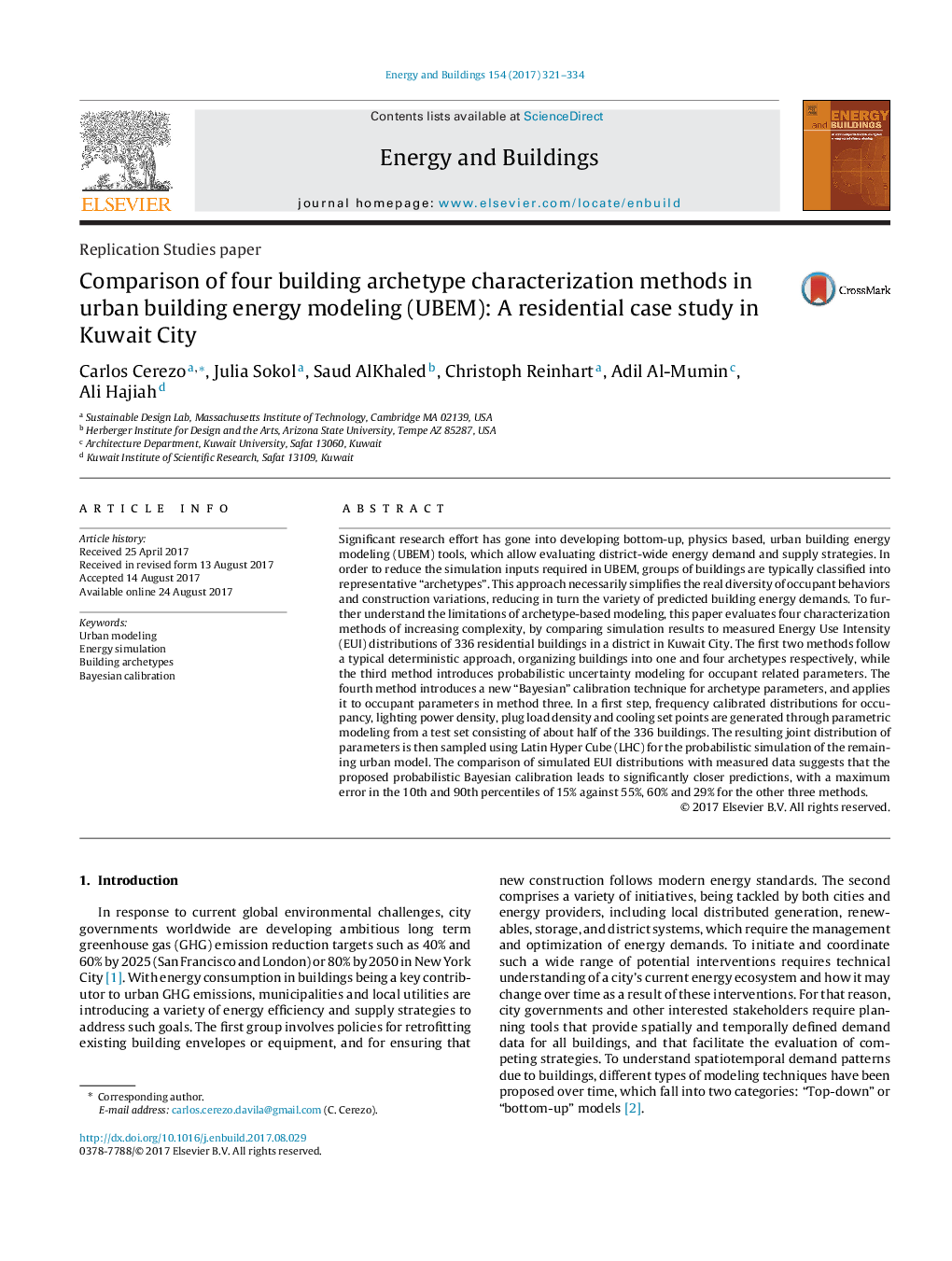| کد مقاله | کد نشریه | سال انتشار | مقاله انگلیسی | نسخه تمام متن |
|---|---|---|---|---|
| 4918765 | 1428936 | 2017 | 14 صفحه PDF | دانلود رایگان |
عنوان انگلیسی مقاله ISI
Comparison of four building archetype characterization methods in urban building energy modeling (UBEM): A residential case study in Kuwait City
دانلود مقاله + سفارش ترجمه
دانلود مقاله ISI انگلیسی
رایگان برای ایرانیان
کلمات کلیدی
موضوعات مرتبط
مهندسی و علوم پایه
مهندسی انرژی
انرژی های تجدید پذیر، توسعه پایدار و محیط زیست
پیش نمایش صفحه اول مقاله

چکیده انگلیسی
Significant research effort has gone into developing bottom-up, physics based, urban building energy modeling (UBEM) tools, which allow evaluating district-wide energy demand and supply strategies. In order to reduce the simulation inputs required in UBEM, groups of buildings are typically classified into representative “archetypes”. This approach necessarily simplifies the real diversity of occupant behaviors and construction variations, reducing in turn the variety of predicted building energy demands. To further understand the limitations of archetype-based modeling, this paper evaluates four characterization methods of increasing complexity, by comparing simulation results to measured Energy Use Intensity (EUI) distributions of 336 residential buildings in a district in Kuwait City. The first two methods follow a typical deterministic approach, organizing buildings into one and four archetypes respectively, while the third method introduces probabilistic uncertainty modeling for occupant related parameters. The fourth method introduces a new “Bayesian” calibration technique for archetype parameters, and applies it to occupant parameters in method three. In a first step, frequency calibrated distributions for occupancy, lighting power density, plug load density and cooling set points are generated through parametric modeling from a test set consisting of about half of the 336 buildings. The resulting joint distribution of parameters is then sampled using Latin Hyper Cube (LHC) for the probabilistic simulation of the remaining urban model. The comparison of simulated EUI distributions with measured data suggests that the proposed probabilistic Bayesian calibration leads to significantly closer predictions, with a maximum error in the 10th and 90th percentiles of 15% against 55%, 60% and 29% for the other three methods.
ناشر
Database: Elsevier - ScienceDirect (ساینس دایرکت)
Journal: Energy and Buildings - Volume 154, 1 November 2017, Pages 321-334
Journal: Energy and Buildings - Volume 154, 1 November 2017, Pages 321-334
نویسندگان
Carlos Cerezo, Julia Sokol, Saud AlKhaled, Christoph Reinhart, Adil Al-Mumin, Ali Hajiah,